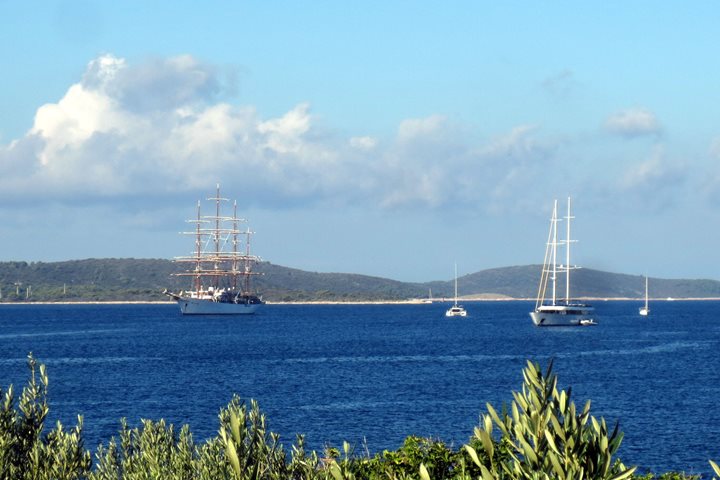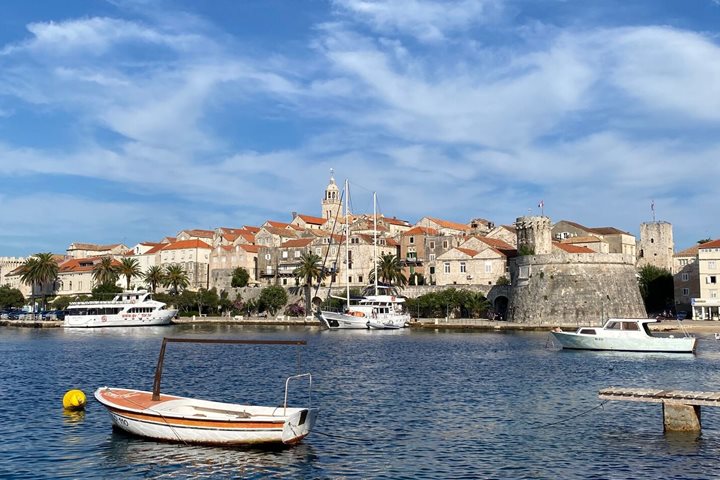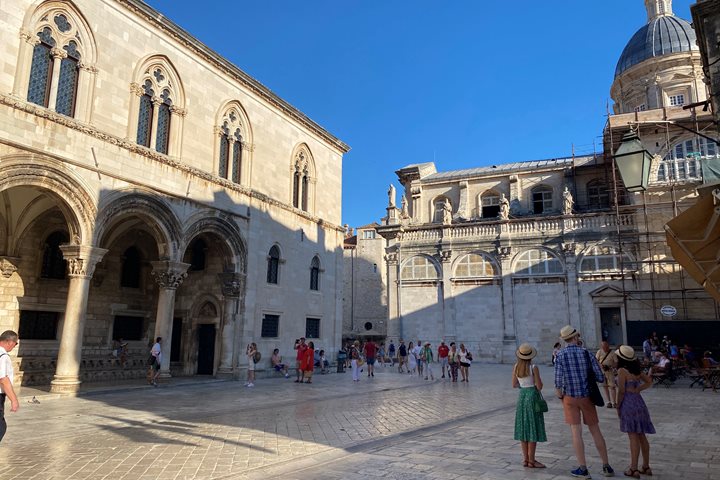We entered the natural wonder of the Kotor Fjord at approximately 5:15 a.m. just as the first dawn was touching the Black Mountains of Montenegro. We stopped briefly to remove some mooring line, which had gotten itself around our prop. This magnificent fjord is strictly speaking not a fjord as it was created by a river and not glacial ice. However, that is merely an academic distinction because as we motored deeper into the fjord the mountains rose up sheer on both sides and, as we entered its narrowest part, the channel was just 100 yards wide. We passed the prosperous village of Perast on our portside before docking at Kotor.
Our first stop was the picturesque and very Venetian village of Perast where we visited the most impressive St. Nikolai Church, a Roman Catholic Church built by Venetians. We saw the carved, full-size marble angels on the altar, the creation of an 18th century gifted artist. After our visit to this beautiful church, we stopped in the village and had refreshments at the picturesque Hotel Conti. We then boarded small motor launches and visited the postage stamp artificial island “Gospa od Skrpjela” in the middle of the fjord. This jewel-like place with the sky-blue dome has a rich history. A legend says fisherman found an icon floating near this spot. They retrieved it and brought it back to St. Nikolai’s. The next day the icon was gone and found floating at the same spot in the fjord. This cat and mouse game continued for some time. Finally, the fisherman decided that every time one of them passed this place they would drop rocks in the sea. Gradually it formed an island and in the end they erected a church to the Virgin Mary and placed her icon in the church on this island. We then stopped at the local maritime museum, the elegant former home of the powerful aristocratic family deriving their authority from Venice.
We next took coaches to the walled city of Kotor. We had a lovely walk through the old city, and I found the Cathedral of St. Tryphon particularly interesting, as it is a largely intact Romanesque interior with a Baroque period façade. Of special beauty is the marble baldachin over the main altar, elaborately carved and dating possibly from the 13th century. The carving is reputed to be by Greek artisans. The church’s architecture is, however, definitely influenced by the innovations being made at the Abbey of Monte Casino under the guidance of the great Abbot Desiderius. Some of the original boldly colored Romanesque frescoes still survive on the walls and the archway ceilings. Another very interesting feature, but partly obscured by the pews is a maze of colored marble in the middle of the nave. The maze presents the paradox of life—although confusing and difficult those who persevere can find their way out! The church has also employed ancient Roman Corinthian capitals. The present Romanesque church is built on the foundation of an earlier ninth century church, which was built and paid for by a man named Andre Saracensis, meaning “Andrew the Saracen.” I am unsure what to make of this but I would like to imagine that a rich non-Christian might have paid to build the early church.
After a great Sea Cloud lunch we boarded coaches to visit the village nestled more than 3,000 feet atop the mountains overlooking Kotor Bay. The bus ride up takes about an hour and contains 28 hair-raising switchback turns. The views on the way up are stunning. I felt as if the Swiss Alps were placed on the sea. Njeguŝki is a farming village, which specializes in the world’s most delicately smoked prosciutto. Of course we not only sampled the local ham and cheese but we washed it down with cherry liqueur, Rakia (a local grappa which has the kick of a mule) and local wines and beer. The bus ride down seemed much faster!
Tonight, our indefatigable hotel manager, Simon, has visited the local fishmongers and treated us to fresh Montenegrin oysters. Yum. After the oyster feats we went to dinner! After dinner we watched the rousing video Around Cape Horn by Irwin Johnson. I have seen this film many times but still cannot believe the storm Johnson photographed in the late 1920s going around Cape Horn. I shall be sad to leave this uniquely beautiful country of Montenegro and I hope to return.







